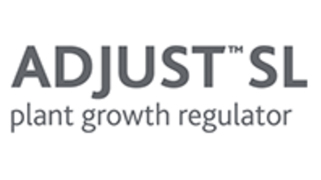For optimal results, Adjust SL requires two hours before rain or frost occurs. After absorption, it immediately begins to affect the gibberellin synthesis process. Under cool conditions, it will remain active in the plant until warmer conditions begin to promote stem elongation. Under persistent cool growing conditions, it may take longer to see the growth effect.
Adjust SL is formulated to work effectively at temperatures as low as 34°F. Chlormequat chloride (CCC) has a slow onset of actions, allowing the manipulation of rooting and tillering, which are largely determined during cool, early growth periods.
The Adjust SL formulation is based on CCC, which has a slow onset of action and long residual activity to work gradually in the plant. Learn more about the working mechanisms of plant growth regulators here.




